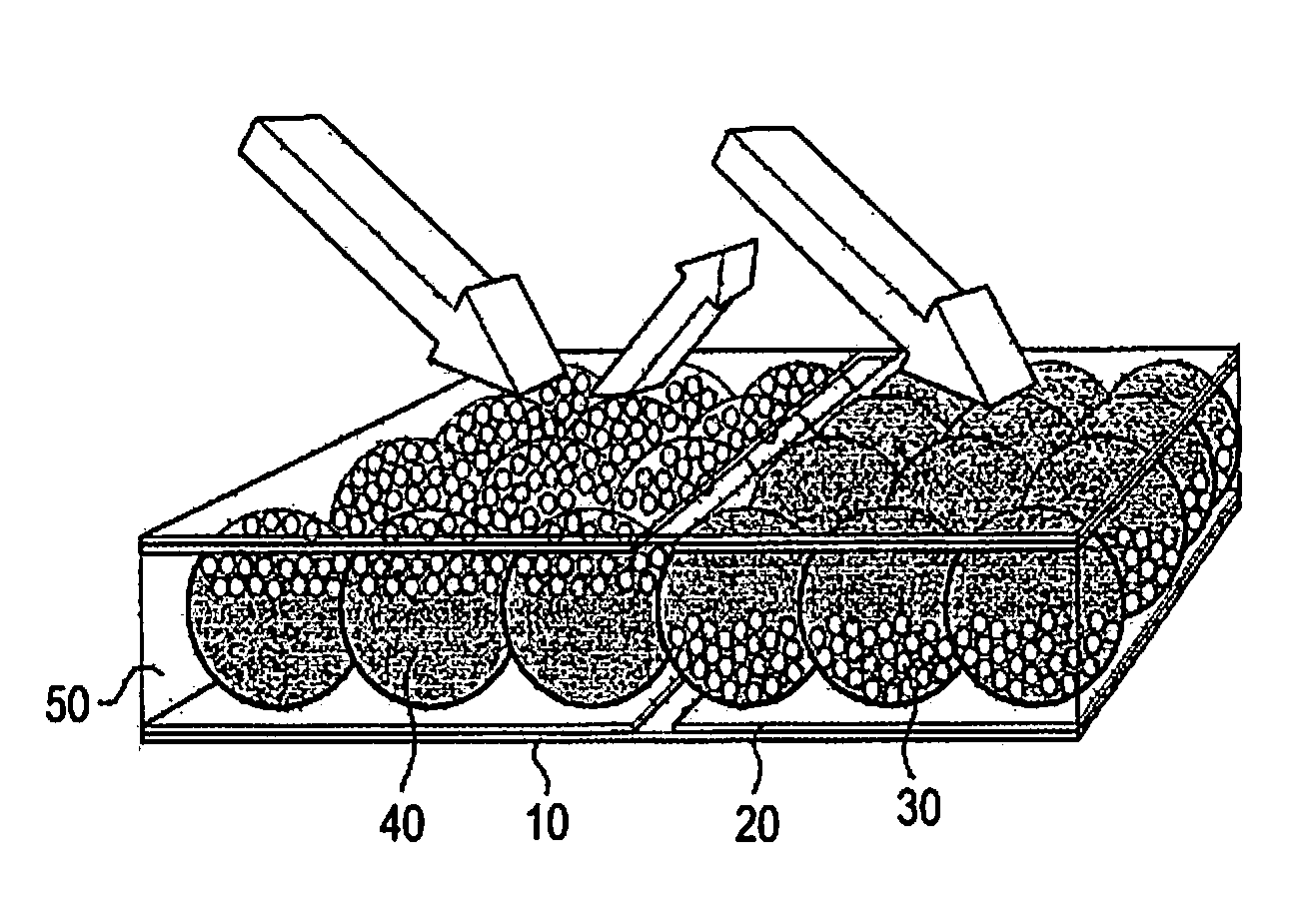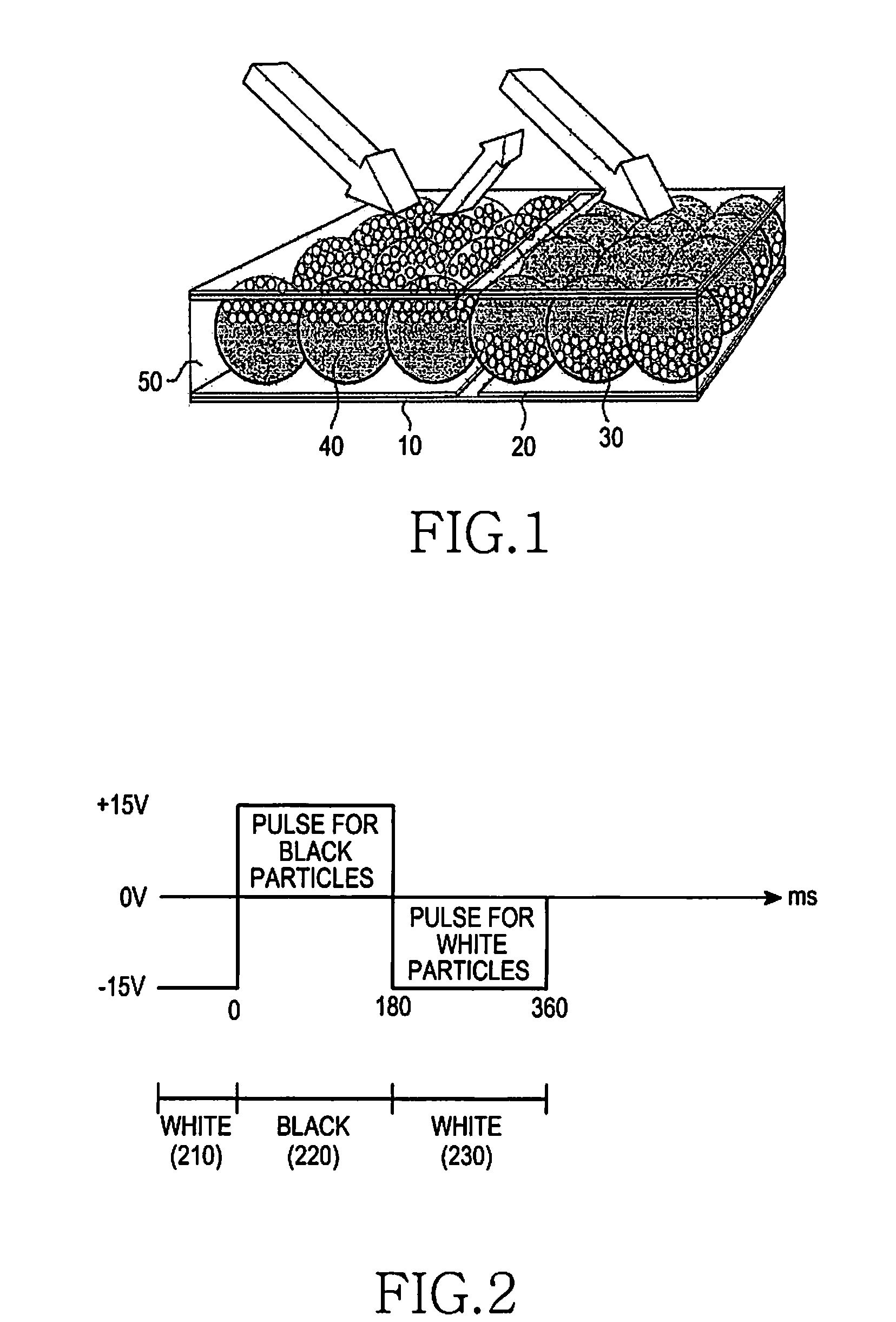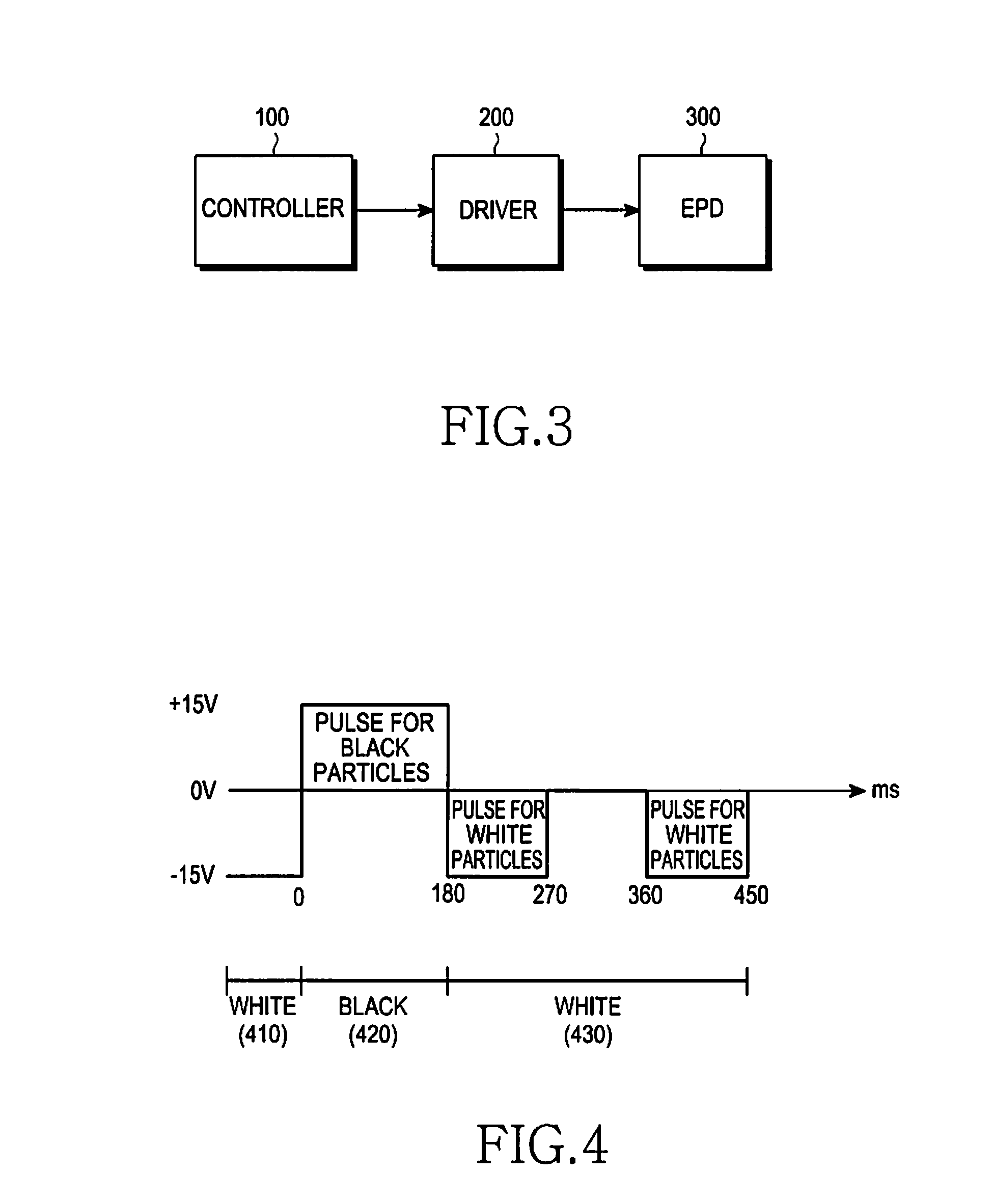Method and apparatus for driving electrophoretic display
- Summary
- Abstract
- Description
- Claims
- Application Information
AI Technical Summary
Benefits of technology
Problems solved by technology
Method used
Image
Examples
Embodiment Construction
[0022]Hereinafter, embodiments of the present invention are described in detail with reference to the accompanying drawings. In the following description, only parts necessary for understanding operations of the present invention will be described. However, those skilled in the art will appreciate that the disclosed concepts and concrete embodiments of the invention as described below to solve the technical problem of the invention may be changed or modified. Further, those skilled in the art will appreciate that the disclosed concepts and structures and equivalents thereof do not depart from the scope and spirit of the invention in the widest form as disclosed in the accompanying claims. In the following description, the same elements will be designated by the same reference numerals although they are shown in different drawings. Further, a detailed description of known functions and configurations incorporated herein will be omitted so as not to make the subject matter of the pres...
PUM
 Login to View More
Login to View More Abstract
Description
Claims
Application Information
 Login to View More
Login to View More - R&D
- Intellectual Property
- Life Sciences
- Materials
- Tech Scout
- Unparalleled Data Quality
- Higher Quality Content
- 60% Fewer Hallucinations
Browse by: Latest US Patents, China's latest patents, Technical Efficacy Thesaurus, Application Domain, Technology Topic, Popular Technical Reports.
© 2025 PatSnap. All rights reserved.Legal|Privacy policy|Modern Slavery Act Transparency Statement|Sitemap|About US| Contact US: help@patsnap.com



